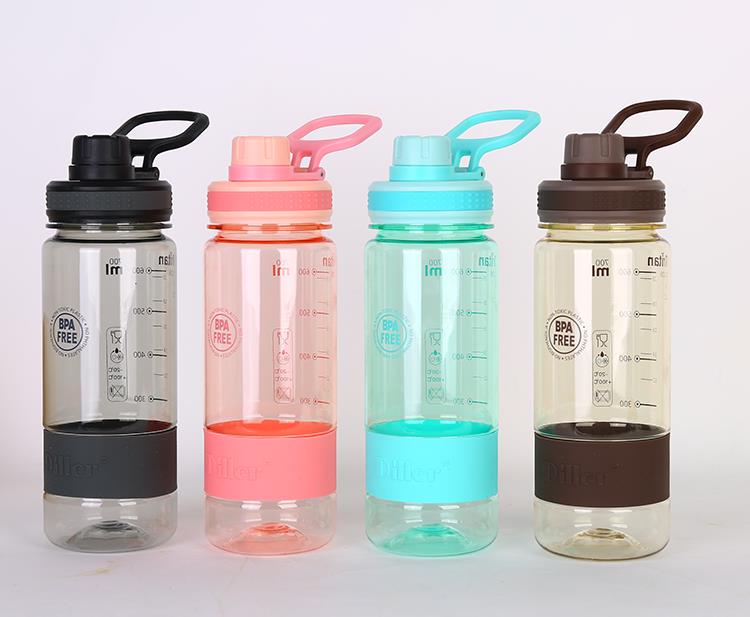In some supermarkets, children's plastic water bottles with various colors displayed on the shelves are mostly unmarked, and consumers generally only choose the capacity and style of plastic water bottles. Few people pay attention to the material and safe use of plastic water bottles.
In view of the potential hazards of plastic products to human health, a consumer warning is issued for this purpose:
First, plastic water bottles can not be reused for a long time, cautious use of plastic water bottles filled with hot water.
The second is to look at the material of the plastic water bottle. The identification method is to put the bottom of the plastic water bottle up and see a triangle symbol with three arrows. There are 1-7 numbers in the triangle. Each number represents a different material. Although this labeling method is not mandatory, in order to facilitate the recycling of plastic products, large and medium-sized enterprises generally label plastic recycling labels. Therefore, when consumers choose plastic containers, they must choose the products of large enterprises first.

Digital ID 1 indicates that PET (polyethylene terephthalate), mineral water bottles, carbonated beverage bottles are made of this material, heat-resistant to 70 ℃, high temperature liquid or heated easily deformed, harmful substances will dissolve.
Digital ID 2 indicates HDPE (High Density Polyethylene), which is often used to produce white medicine bottles, cleaning products and bathing products. At present, most of the plastic bags used in supermarkets are made of this material, which can withstand high temperature of 110 ℃, Plastic bags for food can be used to hold food.
Digital ID 3 indicates PVC (polyvinyl chloride), which is often used to produce raincoats, building materials, plastic films, plastic boxes and other products. Plastic products of this material are prone to produce toxic and harmful substances.
Digital ID 4 indicates LDPE (low density polyethylene), fresh-keeping film, plastic film and so on are all made of this material, which is not heat-resistant. Usually qualified PE fresh-keeping film will melt when the temperature exceeds 110 ℃, leaving some plastic preparations that can not be decomposed by human body. When food is wrapped in fresh-keeping film and heated, the grease in the food can easily dissolve the harmful substances in the fresh-keeping film. Therefore, consumers are reminded to remove the wrapped film before putting food into the microwave oven.
Number 5 indicates PP (polypropylene). Microwave oven lunch boxes are made of this material and can withstand 130 ℃ high temperature. This is the only plastic box that can be put into the microwave oven. It should be noted that some microwave oven lunch boxes are made of PP, but the lid is made of PS (polystyrene).
Digital ID 6 indicates PS (polystyrene), which has good transparency, but is not high temperature resistant and can not be put into the microwave oven with the box. To be safe, remove the lid before putting the container into the microwave oven. Digital ID 7 denotes PC (polycarbonate) and other categories, mostly used in the manufacture of baby bottles, space cups and other products.
Some inferior plastic products with peculiar odor are poisonous, and plastic products that meet hygienic standards have no peculiar odor.

